
Erechthias chionodira is a species of moth of the family Tineidae. It was first described by Edward Meyrick in 1880. This species is endemic to New Zealand and has been observed on both the North and South Islands. E. chionodira inhabits native forest. Larvae likely feed on dead plant debris or on the tough leaves of plants such as flax. Adults are on the wing from September until February. During the day they can be seen at rest on tree trunks or fences. Adults are attracted to light.

Heterocrossa exochana is a species of moth in the family Carposinidae. It is endemic to New Zealand and has been observed in the North and South Islands. The larvae of this species feed on the fruits of Muehlenbeckia species. The adult is on the wing from September until May and are attracted to light.

Amblyptilia epotis is a moth of the family Pterophoridae. It is endemic to New Zealand and is found in the South and Stewart Islands. It inhabits mountainous terrain covered in alpine vegetation or alternatively alpine wetland habitat. The adults of this species are on the wing from February to March. In appearance the adults of this species are variable in colour however this species can be distinguished from similar species by the oblique apical streak on its forewings as well as the patch of white on the costa cilia towards the apex of the forewing.
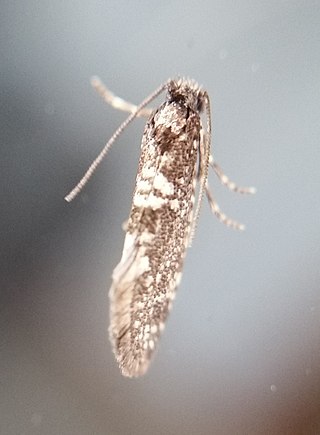
Scoriodyta conisalia is a species of moth in the family Psychidae. It was described by Edward Meyrick in 1888. It is endemic to New Zealand and can be found in the North Island. It has been observed at Karikari, Paihia, in the Poor Knights Islands, and in the Auckland and Wellington regions. The species inhabits native forest and coastal areas where it can be found on rocky outcrops and cliffs. Larvae consume algae and lichens. The adults are on the wing from September to March and are active before sunrise.
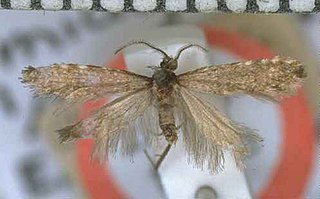
Reductoderces microphanes is a moth of the family Psychidae. This species is endemic to New Zealand. R. microphanes is a bagworm moth and its larvae likely feed on lichen or algae. Historically there has been some confusion over the identification of this species with George Hudson mistakenly describing and illustrating unnamed species and then attributing those descriptions and illustrations to this species. Charles Edwin Clarke discussed this species stating that it and its close relatives were active and able to be collected in damp mists before sunrise.

Erechthias charadrota is a species of moth in the family Tineidae. It was first described by Edward Meyrick in 1880. This species is endemic to New Zealand and is found on both the North and South Islands. It inhabits native forest and the larvae likely feed on either deceased plant detritus or tough leaves of plants such as palms or flax. Adults are on the wing commonly from October to February and it is likely this species has two broods per year. Adults have been trapped via a blacklight.

Erechthias chasmatias is a species of moth in the family Tineidae. It was first described by Edward Meyrick in 1880. This species is endemic to New Zealand and is found in the North Island. This species inhabits native bush. Adults are on the wing from October to April and have been collected by beating small trees and foliage.

Erechthias exospila is a species of moth of the family Tineidae. It was first described by Edward Meyrick in 1901. It is endemic to New Zealand and can be found in the North Island as well as the Poor Knights and D'Urville Islands. This species inhabits native forest. Larvae of species in the genus Erechthias feed on dead plant debris or the tough leaves of plants such as palms. E. exospila frequents the dead leaves of Astelia. Adults have been observed in November and February. Specimens of this species have been collected via malaise trap and beating shrubs.

Erechthias hemiclistra is a species of moth of the family Tineidae. It was first described by Edward Meyrick in 1911. This species is endemic to New Zealand and has been observed in both the North and South Islands. This species inhabits native forest and have an affinity for species in the genera Phormium,Cortaderia and Cordyline likely as a result of the larvae of this species feeding on dead fibre sourced from species in these genera. Adults are on the wing from September to April but are most commonly observed in December and January. Adults are attracted to light.

Erechthias macrozyga is a species of moth of the family Tineidae. It was described by Edward Meyrick in 1916. This species is endemic to New Zealand and has been observed in the North and South Islands. This species inhabits lowland native forest. Adult moths are on the wing from October to February.

Tingena anaema is a species of moth in the family Oecophoridae. It is endemic to New Zealand and has been collected at Lake Wakatipu, Invercargill and Stewart Island / Rakiura. The adults of the species are on the wing in December.
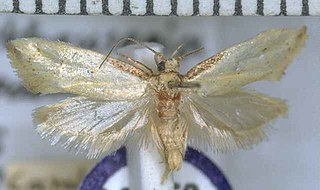
Tingena apanthes is a species of moth in the family Oecophoridae. It is endemic to New Zealand and found on the North Island. The adults are on the wing from October to December. It appears associated with Leptospermum species and it has been hypothesised that the appearance of the adults of this species imitates faded Leptospermum leaves.
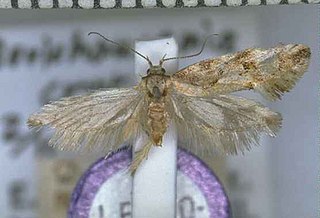
Tingena crotala is a species of moth in the family Oecophoridae. It is endemic to New Zealand and is found both in the North and South Islands. This species inhabits native forest and is on the wing in November and December.

Tingena hemimochla is a species of moth in the family Oecophoridae. It is endemic to New Zealand and has been observed in the North Island. Adults of this species are on the wing from December until March.

Tingena horaea is a species of moth in the family Oecophoridae. It is endemic to New Zealand and have been observed in both the North and South Islands. The adults are on the wing in January.
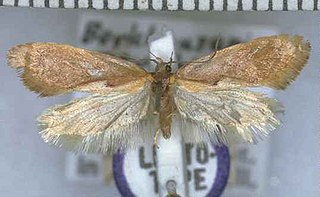
Tingena perichlora is a species of moth in the family Oecophoridae. It is endemic to New Zealand and has been observed in the southern parts of the South Island. This species appears to inhabit manuka scrub. Adults of this species are on the wing from October to January.
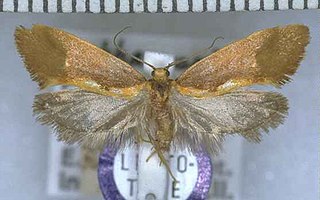
Tingena phegophylla is a species of moth in the family Oecophoridae. It is endemic to New Zealand and has been observed in the southern parts of the South Island. This species inhabits native beech forest. The adults of this species are on the wing in December.

Tingena pronephela is a species of moth in the family Oecophoridae. It is endemic to New Zealand and is found in the southern parts of the South Island. The species inhabits the outskirts of scrub and native forest. The adults of this species are on the wing from October to February.

Trachypepla lichenodes is a moth of the family Oecophoridae first described by Edward Meyrick in 1883. It is endemic to New Zealand and has been found in both the North and South Islands. It inhabits native forest and adults of this species are on the wing from November to January. The adult moths are similarly coloured to native lichen species however this colouration is variable in the extent and depth on the forewings.

Chrysorthenches porphyritis is a species of moth of the family Plutellidae. It was first described by Edward Meyrick in 1885 and is endemic to New Zealand. This species can be found on both the North and South Islands in open native forest and scrub at altitudes from sea level up to 1370 m. The larvae feed on Podocarpus laetus, P. totara, P. nivalis, and Phyllocladus alpinus. The larvae create a shelter by loosely spinning together the leaves of its host plant and can be found feeding in groups. The pupa is formed inside a thin cocoon. Hudson was of the opinion that this species had two broods a year. Adult moths are on the wing all year round. The adults of this species, particularly the female, are variable in colouration and in forewing pattern.





















